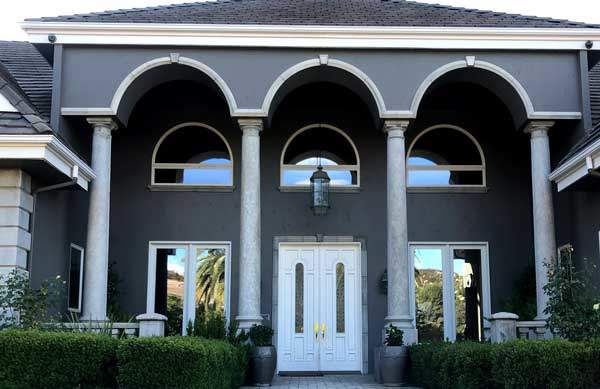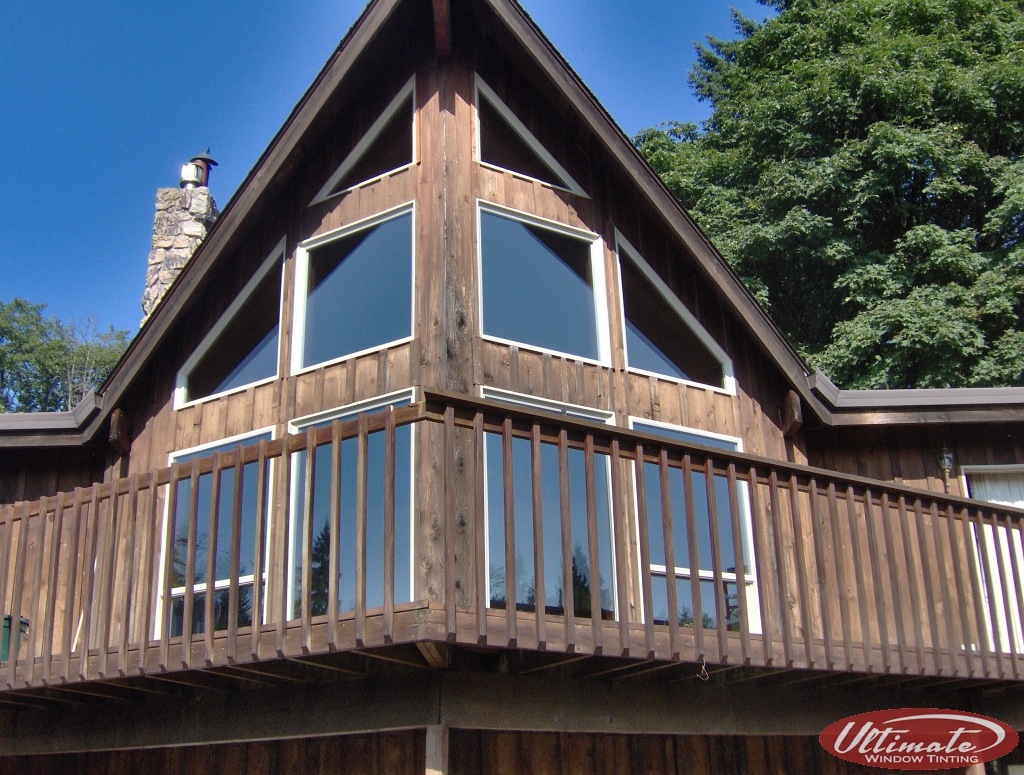Just How Residential Home Window Tinting Enhances Your Home's Power Performance
Residential window tinting offers a compelling remedy for property owners seeking to enhance energy effectiveness within their living spaces. By using specialized films to home windows, it effectively minimizes warm transfer, consequently supporting indoor temperatures and decreasing the demand for excessive heating or air conditioning.
Comprehending Window Tinting
Comprehending window tinting is vital for home owners looking for to boost both convenience and energy efficiency in their living spaces. Residential Window Tint. Window tinting entails the application of a thin movie to the inside or outside surface of glass home windows. This film can significantly modulate the amount of sunlight and heat that gets in a home, therefore affecting indoor environment conditions
There are numerous kinds of home window tinting movies available, each with distinctive residential or commercial properties. Dyed movies soak up solar energy, while reflective movies disperse it away from the glass surface area. Ceramic films provide an equilibrium of exposure and warmth denial, making them a prominent choice among house owners. The effectiveness of home window tinting is typically measured by its Visible Light Transmission (VLT) percent, which shows just how much light can pass with the movie.
Benefits of Power Efficiency
Window tinting not just boosts aesthetics however likewise plays a substantial function in enhancing energy efficiency within domestic spaces. By lowering heat transfer via windows, tinted movies create a more steady indoor environment, which can cause significant decreases in energy intake for cooling and heating. This energy efficiency converts into reduced energy costs, supplying house owners with substantial lasting savings.

In addition, home window tinting enhances the comfort of living areas. By lessening glow and blocking unsafe UV rays, tinted windows create a more positive setting, which can bring about enhanced well-being for occupants. The defense versus UV rays also aids protect furniture and flooring from fading, adding to the long life of household items.
How Tinting Functions
Tinting movies operate through a mix of innovative products and innovations designed to regulate the amount of solar power getting in a home. Mainly composed of polyester, these movies usually include ceramic or metal fragments that mirror and soak up heat. This double capacity permits them to considerably decrease the penetration of ultraviolet (UV) rays and infrared radiation while permitting noticeable light to go through.
The performance of window tinting is measured by its solar warm gain coefficient (SHGC), which shows just how much solar power is sent via the window. Lower SHGC values are more suitable as they denote greater heat rejection. Furthermore, window colors can include a selection of shades, permitting home owners to personalize their aesthetic preferences while enhancing power effectiveness.
Moreover, these movies work as an obstacle, preventing warmth loss throughout colder months by mirroring indoor warmth back into the space. This thermal insulation effect enhances the cooling benefits gained during warmer months, adding to a well balanced indoor climate year-round. By taking care of solar power successfully, residential window tinting not only enhances comfort yet also plays an important function in lowering power usage and decreasing energy expenses.
Picking the Right Tint

There are different kinds of window movies offered, including colored, metalized, and ceramic. Ceramic movies offer superb warmth control without endangering presence and are extremely durable, making them a preferred option.
Noticeable light transmission (VLT) is one more crucial element, as it suggests the quantity of all-natural light that can go through the colored glass. House owners ought to select a tint with a VLT that enhances their lights choices while still supplying appropriate glare reduction.
In addition, assessing the solar heat gain coefficient (SHGC) can aid identify exactly how well a color can obstruct warm from sunshine. A lower SHGC suggests far better heat control, inevitably improving energy effectiveness.
Installation and Maintenance Tips
Appropriate installation and maintenance are essential components in optimizing the benefits of property window tinting. Specialists additionally make use of specialized techniques and tools, which can enhance the toughness and efficiency of the tint.
Adhering to setup, upkeep is essential to lengthen the life of the window movie. It is suggested to wait at the very least 30 days before cleansing the colored home windows to enable the sticky to cure completely.
Resolving these concerns without delay can avoid further damages and keep energy effectiveness. By adhering to these installation and upkeep tips, homeowners can guarantee their home window tinting continues to supply substantial energy cost savings and comfort for years to come.
Final Thought
In conclusion, residential home window tinting serves as a reliable option for boosting power performance within homes. By reducing warm transfer and obstructing damaging UV rays, home window movies add to lower power intake and enhanced indoor comfort.
Window tinting involves the application of a thin film to the inside or outside surface of glass windows. By decreasing heat transfer with home windows, tinted movies produce an extra stable indoor environment, which can lead to considerable decreases in power consumption for heating and air conditioning.The efficiency of window tinting is view publisher site determined by its solar warm gain coefficient (SHGC), which shows just how much solar power is transferred with the home window. By taking care of solar power successfully, household window tinting not only boosts comfort but additionally plays an important duty in lowering power intake and lowering utility expenses.
By lowering warm transfer and blocking unsafe UV rays, home window films add to reduce power intake and boosted address interior convenience.